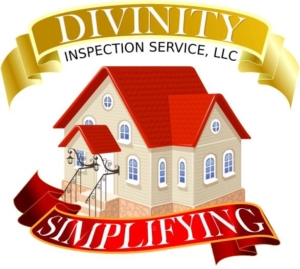1. Structural System – I will inspect entryways, foundations, siding and porches, settlement, certain types of cracks in foundations.
2. Exterior – An exterior inspection will include a visual assessment of decks, balconies, eaves, soffits and fascias. I will look at the grading of the land around the house for obvious drainage problems, and check walkways and driveways for apparent deterioration or safety concerns near the building(s). I will also visually inspect vegetation surrounding the house for obvious problems. Tree limbs touching the house, can threaten the house during violent storms.
3. Roof System – The roof is examined closely for loose shingles or tiles. Where safely possible, I should report on roof drainage systems, flashings, skylights, chimneys, and roof penetrations (for vents and flues). Gutter debris is noted, and all drains are tested for a tight connection to the house. My inspection also include:
A. Roof Covering
B. Attic Areas and Roof Framing
4. Plumbing System – My inspection will consist of testing the interior water supply and distribution system including water pressure, water heating equipment (estimating age and approximate time to replacement if damage is showing) and the appropriateness of vents, flues, and chimneys. I will flush toilets and turn on faucets to check for leaks and to assess (well testing) water pressure and the immediacy and volume of available hot water.
5. Electrical System – I will check for over current protections, grounding, and the presence of any aluminum wiring nob and tub (a serious fire hazard and banned for many years in most states). I will remove the face of the electrical box if it is safe to do so to visually check wiring and breakers. I will also check a representative number of switches and outlets in the house and note the adequacy of smoke detectors.
6. Heating System – No matter the time of year, the HVAC should be tested by turning up the thermostat and checking the response. If the energy source is oil, I will check the condition of the tank and any visible lines running from the tank to the furnace.
7. Air Conditioning Systems – Air conditioning cannot be checked if the ambient outdoor temperature is below a certain point. Supply pipes are examined for corrosion or other issues. Air conditioning system is tested to verify it’s in working condition, and the appropriate filters are examined for accumulation. Drainage areas are checked to ensure they are up to standard.
8. Interior – My inspection will include a visual scan of floors, walls and ceilings for signs of water intrusion, or sagging. Stairways and railings will be checked for safety and code compliance and a sample of windows and doors inspected for condition and ease of operation of inside and outside doors. I look at counter tops and a representative number of the kitchen cabinet interiors and drawers for condition and integrity. If your one of the few with basement. The basement should be checked for indications of previous water intrusion in addition to signs of structural problems.
9. Insulation and Ventilation – Poor ventilation can lead to rot, mold, poor air quality or excessive energy consumption. I will check insulation and vapor barriers in unfinished areas of the attic and in the foundation area and look for the presence and operation of any mechanical ventilation systems in the attic, rooftop and other high humidity areas such as kitchens and bath. All venting fans that aren’t working also are included. Under-floor insulation, if accessible through the basement or crawl space, also is examined for deterioration or issues.
10. Fireplaces and Solid Fuel Burning Appliances – Fireplaces, particularly in older homes, are a frequent source of problems. I will check for the integrity of the flue, proper draft, and any blockages in the chimney (even a bird’s nest can be a major problem), and will visually inspect, as much as possible, the exterior of the chimney for damage to bricks, pointing, and flashing.
11. Foundation, Basement, and Under-floor Areas also under home- Foundation system, floor framing system, under-floor ventilation, foundation anchoring and cripple wall bracing, wood separation from soil, and insulation will be checked.
12. Garage & Garage Doors also garage door safety – Slab, walls, ceiling, vents, entry, firewall and door, garage door, openers, lights, receptacles, exterior, windows and roof. Electric garage door openers should be checked to confirm they are in compliance with current safety standards.
13. Appliances – I will usually run a dishwasher and will check stove burners and oven to make sure each is operating properly as well as secured properly with the anti-tip-bracket. If other appliances such as washer, dryer, or microwave are to be included in the purchase these will also be checked to make sure they are at least in operating condition and safe to use.
14. Shower pan test during the home inspection, especially if it is an older home. Most home inspector don’t test shower pan but would you like to get stuck with 3K or 4K repair for leaking shower. I don’t think so, this is whey we do test shower pan. However, it is worth noting that a shower pan test is not required by the Standards of Practice for home inspectors under Florida Statute 61-30.806, which states that “the inspector is not required to test shower pans, tub and shower surrounds for leakage.” So not every inspector will do it for you.

